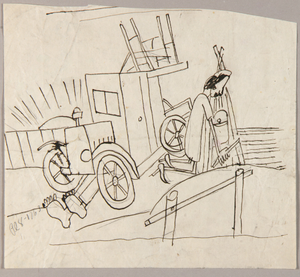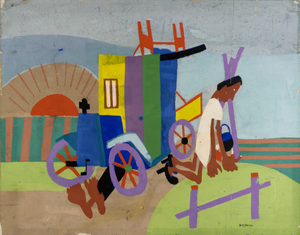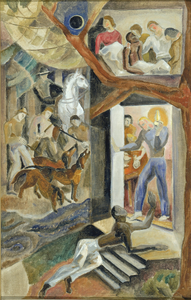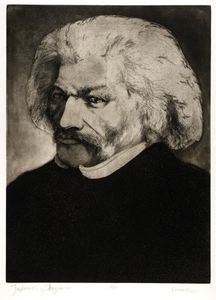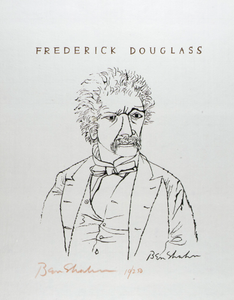Harriet Tubman
Description
In 1938, William H. Johnson and his wife, Holcha Krake, arrived in New York after fleeing a tumultuous Europe on the brink of war. His homecoming sparked the need to "paint his own people"--a sentiment influenced by Holcha, who, as a textile artist, understood the importance of tradition in contemporary culture.Harriet Tubman is part of Johnson's 1945 series, Fighters for Freedom, which depicted the heroic figures who led the fight for racial and individual equality. Tubman's likeness is taken from a popular woodcut first published in the 1922 book The Negro in Our Times by Carter G. Woodson. Standing at attention in Civil War-era dress and holding a shotgun at her side, Tubman appears stoic and resolute. Behind her, a path extends into the distance, interwoven with sketchily drawn railroad tracks that split the landscape in two. Beside the young, active Tubman is a bust-length portrait of the elderly woman draped in a lace shawl, perhaps the one given to her by Queen Victoria around 1897.
Image
Oil On Paperboard
Smithsonian American Art Museum, Gift of the Harmon Foundation






